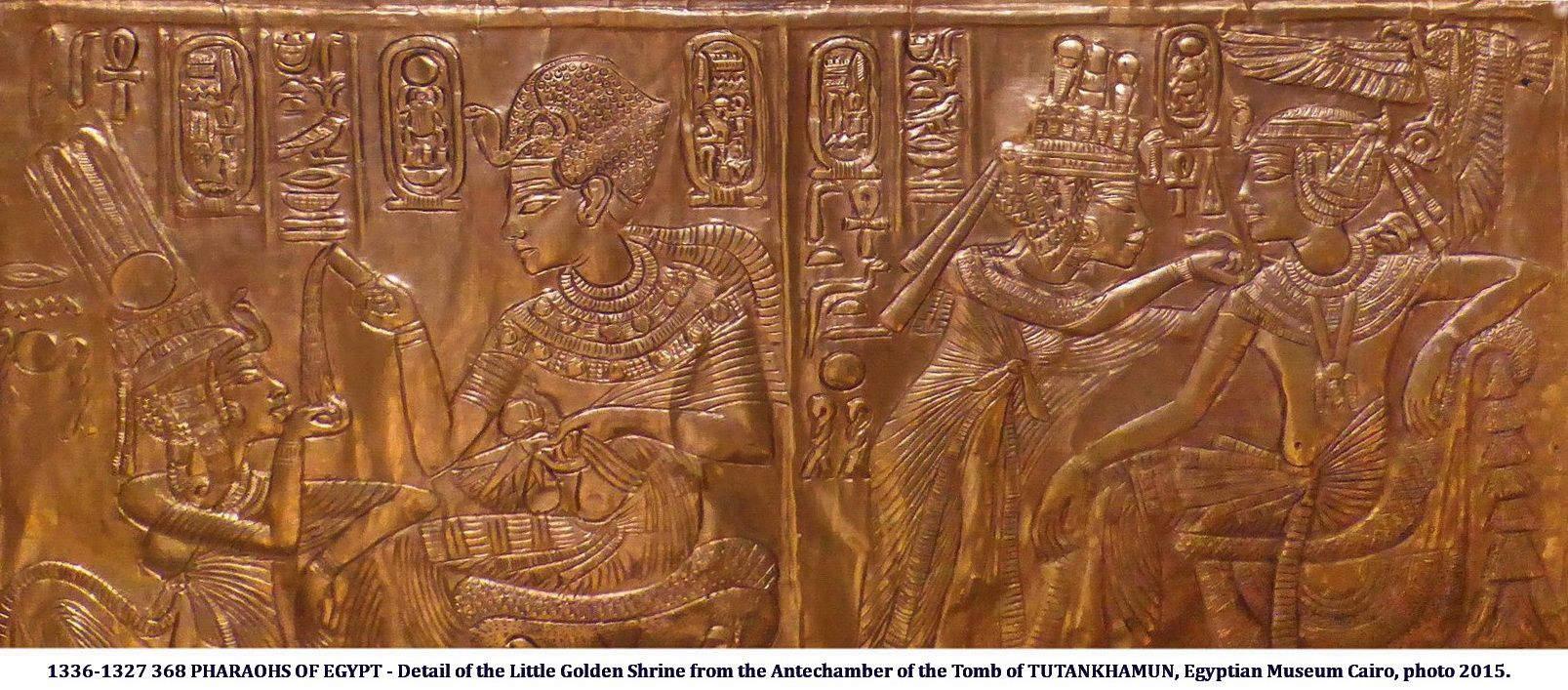
Gilded Wooden Statue Shrine with Scenes of Tutankhamun and Ankhesenamun
Reign of Tutankhamun 1336-1326 BCE
Height 50.5 cm (19.88 inches)
Grand Egyptian Museum #GEM 199-1 (Previously JE 61481)
 Gilded Wooden Statue Shrine with Scenes of Tutankhamun and Ankhesenamun Reign of Tutankhamun 1336-1326 BCE Height 50.5 cm (19.88 inches) Grand Egyptian Museum #GEM 199-1 (Previously JE 61481) |
 The Global Egyptian Museum website has more info: "This small shrine, made of wood and covered with thick gold, rests on a silver-plated sledge. The exterior and the double doors are decorated with scenes showing the king and his wife hunting and enjoying life. "The scenes on the double doors are surrounded by friezes of decorations, royal cartouches, and rekhyt birds. Rekhyt birds are lapwings or plovers with human arms, that symbolize all the people ruled by the king. "Inside the shrine, an ebony pedestal and back pillar bearing the king's name indicated that it had once housed a statue, perhaps that of the goddess Weret-Hekau, Great of Magic, who is mentioned several times in the texts, or a statue of the king himself." |
 Height: Roughly 20 inches tall (50.5cm); Width: Roughly 12.5 inches (32 cm) |
